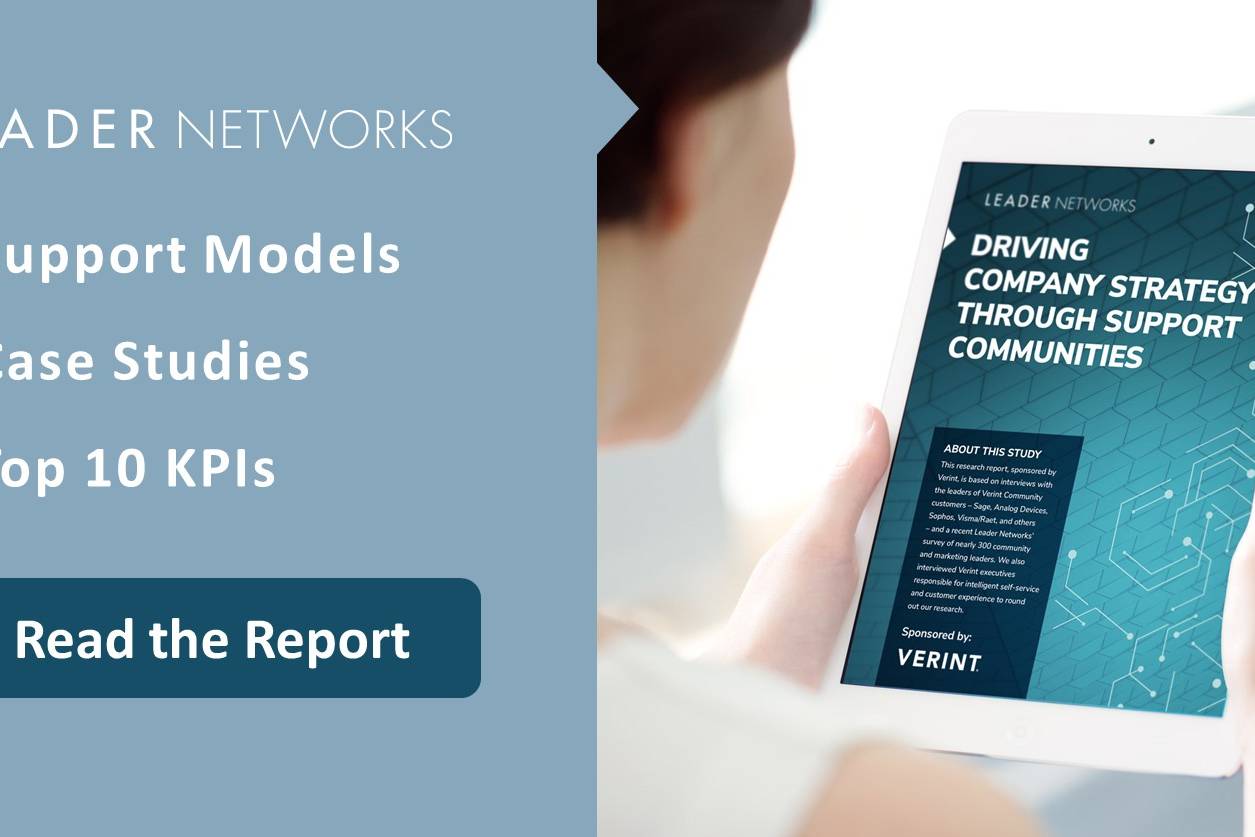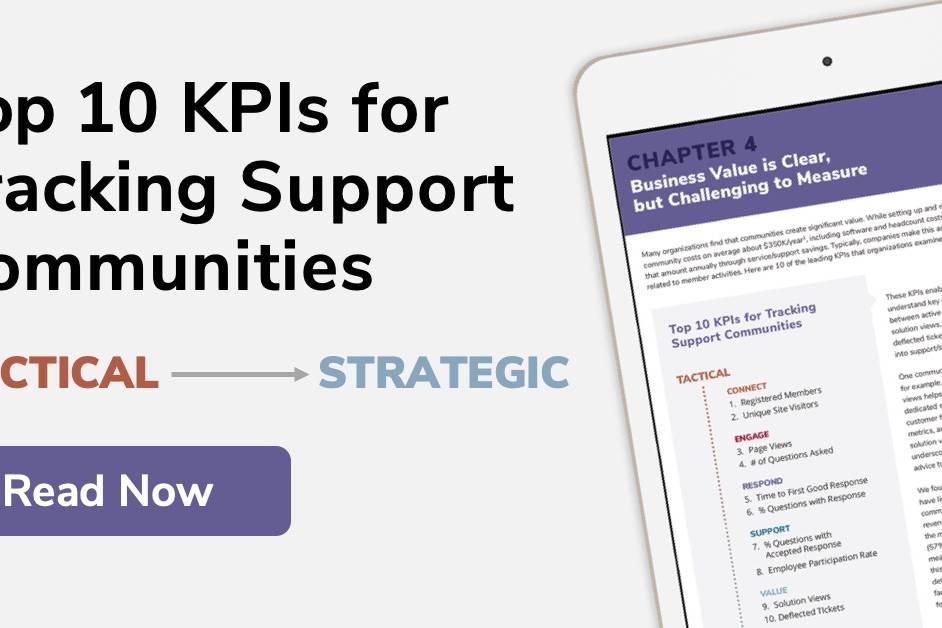by Vanessa DiMauro and Ryck Lent
Last week I blogged about how to build an online community and offered a detailed process overview to help organizations get started envisioning their community. While the community strategy, business goals and member needs remain front and center, one of the more daunting challenges for new online community initiatives is selecting a platform.
Similar to choosing a new home, the community software you choose should fit your and the members’ needs — and your organization’s culture — to best serve both the members and the staff who will run the community. Factors to consider when selecting a platform include: implementation path, feature mix and pricing.
The implementation path includes assessing the build, assemble or buy options. Building — writing your own application — or assembling — adapting a “free” or open-source package — may require substantial internal software development resources, outside expertise or, in the case of some free products, compromise on features. The buy option means partnering with a software vendor to create your community, which may also demand some internal or external expertise. Each option has risks and benefits that depend on your organization’s unique needs and abilities. In general, few build, many assemble and most buy.
Another implementation issue is the hosting method. Will your community be run and controlled from inside your data center, or be part of a hosted service? Each method has pros and cons, and your selection may involve balancing short-term goals like time-to-market with longer-term considerations such as depth of features and customization.
There are literally hundreds of free, open source and commercial community platforms or tools to choose from. Every week, new products appear and others go quiet, as community software is one of the most active sectors in the tech industry. Even well-established community and social networking software firms — those with longevity and strong financial performance — have experienced a number of re-inventions or undergone mergers and acquisitions that redirected their focus.
At first, many community software products seem very similar. However, a closer look suggests most have a specific audience or interaction in mind, with specific feature strengths and weaknesses. Examples of specific categories of online community tools include:
Forums and bulletin boards: Often free or open-source, these can serve general, open and large communities; designed to load quickly, they can support a large number of posts for applications such as customer or technical support.
Blogs with comments and reviews: Blogging with audience feedback provides a venue for building community around thought leadership and exchanging ideas.
Collaboration platforms: Full-featured packages which incorporate content management, member directories, forums, social networking, blogs, file and media sharing and even chat; this is the category served by most commercial online community vendors.
Groupware and knowledge management: More specialized collaboration tools; strong in search for managing large amounts of institutional and member-generated content; often used inside the corporate firewall.
Relationship discovery and data mining: Tools for using social information; uncover connections and relationships; powers “suggested item or person” lists for e-commerce, social or professional sites.
Prices for community platforms vary widely, and the cost is not always directly correlated with the robustness of feature sets. The adage “you get what you pay for” may not always apply to community software tools. For example, a common misconception is that open-source community software is “free.” However, many open-source products require a high degree of customization and personalization to make them usable for specific purposes. Pricing may also involve trade-offs between short and long-term commitments to a particular vendor or service provider.
At Leader Networks, we help companies select a software tool based on a business requirements document (BRD) created to define the strategy, goals and purpose of the community – see the “How to build an online community” post. Here is what we look for in a community platform provider:
- Product capability including feature sets, industry experience, documentation and transparency
- Scalability
- Financial stability
- Cost & time-to-build
- Customer satisfaction
- Implementation, training and support services
- Cultural fit and vendor responsiveness
- Compatibility with legacy systems
Some early questions for the community software provider include:
- Software framework, such as .NET, Java or open source components, and compatibility with your current IT infrastructure standards
- What legacy systems should integrate or interface with the community? For example, customer databases, CMS system(s), CRM systems or, for internal communities, employee directories.
- How does the community platform interface with existing content management systems? How much content will need to be integrated?
- How does the platform manage search? Some platforms offer combined or “federated” search across member directories, user-generated content and institutional content, while others have separate searches for different community components.
Additional vendor identification steps include:
- Technical due diligence from your IT staff
- Usability evaluation by marketing or the new community operations team members
- Creating detailed feature set definitions based on what your community needs, which can then be mapped to the platform capabilities. This avoids settling for only what the platform offers.
Evaluating community platform providers against these and other criteria will help narrow the selection to a handful of tools that will support your community initiative, integrate with your business requirements and, in the end, offer community members the unique benefits they need to make your community effort a success.
Warning: Attempt to read property "base" on array in /home3/trusten9/public_html/leadernetworks/wp-content/plugins/wp-user-profile-avatar/shortcodes/wp-user-profile-avatar-shortcodes.php on line 665
Warning: Attempt to read property "base" on array in /home3/trusten9/public_html/leadernetworks/wp-content/plugins/wp-user-profile-avatar/shortcodes/wp-user-profile-avatar-shortcodes.php on line 665
Warning: Attempt to read property "base" on array in /home3/trusten9/public_html/leadernetworks/wp-content/plugins/wp-user-profile-avatar/shortcodes/wp-user-profile-avatar-shortcodes.php on line 665
Warning: Attempt to read property "base" on array in /home3/trusten9/public_html/leadernetworks/wp-content/plugins/wp-user-profile-avatar/shortcodes/wp-user-profile-avatar-shortcodes.php on line 665
1 Comment
Add comment Cancel reply
This site uses Akismet to reduce spam. Learn how your comment data is processed.



This is a wonderful summary of considerations. As a vendor, however, I would add that the evaluation team should share with the potential vendors what the ultimate goal/purpose of the community will be. It’s much easier to be clear about customizations, features, and capabilities when you know what the end-game is. And we vendors want to make sure that ultimately the customer gets exactly what he/she needs, whether that means choosing us or not.
Thanks for another thoughtful post–I’m a new subscriber 🙂